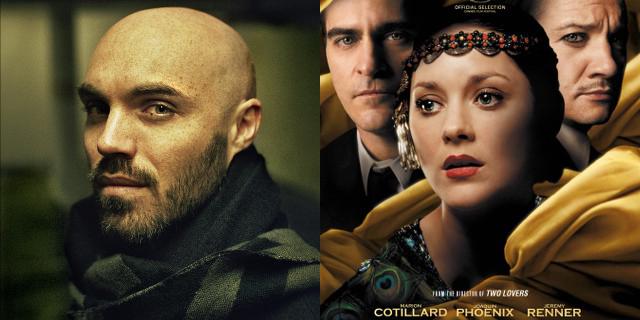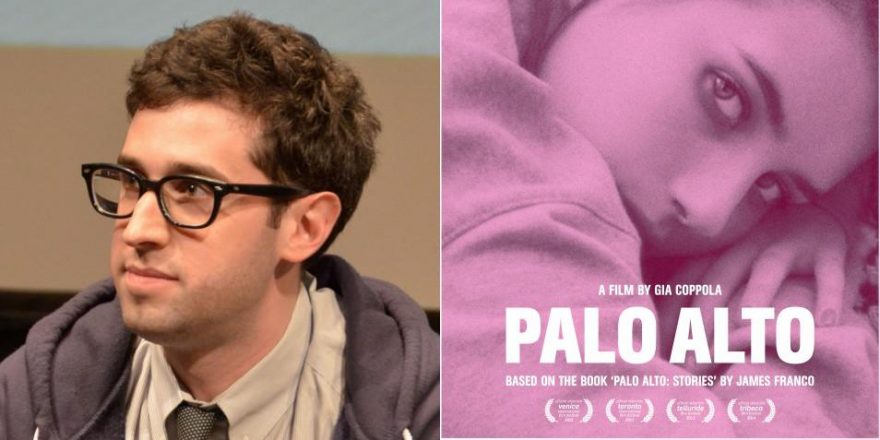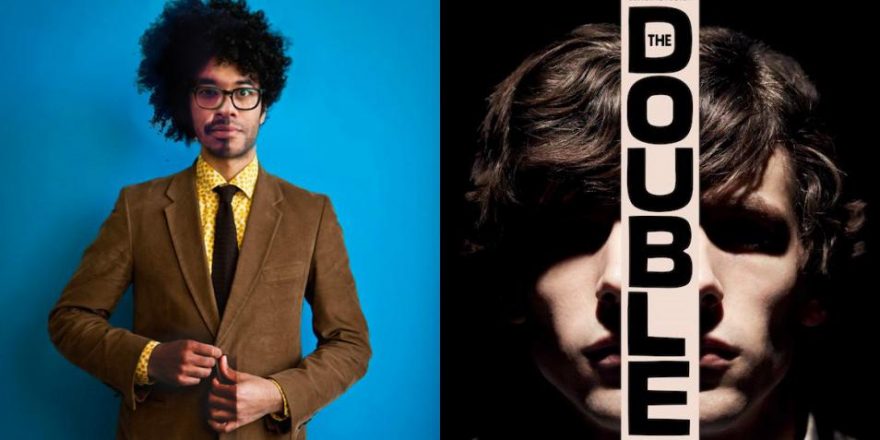James Gray’s The Immigrant has had a rather prolapsed and still-not-complete journey to the big screen in the United States, but I was able to see it last October, in Belgium, while traveling the festival circuit with my own film Ain’t Them Bodies Saints and under many pleasant auspices, none so notable as seeing a new film from one of my very favorite working American filmmakers. If caveats and grains of salt must be taken into account, let me lay on the table that I love Gray’s work, that I find in it no shortage of illumination, that I was as ready to embrace this new picture as any audience member might be. And indeed, I loved it. I believed it to be Gray’s masterpiece, a film whose seeming devotion to classical, operatic melodrama was undercut by a rare, sensate and complex humanism. I was greatly moved by its largesse, and suspected that this was a film for the ages.
The Immigrant is an historical epic based in part upon the stories of Gray’s grandparents, and also upon the grand narrative tradition of saintly women beset upon by an immoral world. The tale itself is set in turn of-the-century New York. Marion Cotillard plays Ewa, a Polish immigrant who in the film’s opening moments disembarks from a long journey at Ellis Island with her sister Magda. It only takes a few moments and a tubercular cough or two for the authorities to tear them asunder, at which point Ewa falls into the company of the snaky Bruno (Joaquin Phoenix), a would-be benefactor who promises her assistance in this New World and then cleverly reveals that his aid hinges entirely upon the subjugation of her virtue. Later, the illusion of a love triangle (with a magician, no less) will come into play. I am being purposefully fleeting in my details here. This is a stately film, ascetically modest and aesthetically lavish by turns, with a deep sodium texture wrought directly from another century. Indeed, were it not for the cast, one might easily mistake this for a film made many decades ago (which, were that the case, would ensure that it was actually presented properly, the way it was intended to be seen, on the grandest of screens, and nowhere else).
So. I saw the film that first time six months ago, and its qualities have percolated in my mind since then. I saw it for a second time just last week and loved it still, but was struck by what I’d forgotten of it since that first viewing. This is something that fascinates me to no end – the way we remember things, movies in particular. I imagine my mind a sieve, collecting the details which will come to define a work in my memory while letting everything else slip through. I don’t believe this sifting to be arbitrary, and I think about this when planning my own films. Perhaps to a fault. I plot out the punctuative highs and lows of a story while asking myself: what do I want people to hang onto?
Ideally, those hung-onto moments should accumulate into a literally incomplete but nevertheless truthful memory of the film. The bits and pieces forgotten – which often may be far more than that and can indeed encompass entire movements, subplots, exchanges of dialogue, love scenes and pensive silences – will upon a second or third viewing augment that memory, enriching and fulfilling those depths alluded to but not necessarily elucidated in synaptic shorthand. This isn’t to say that one’s overarching memory of a film is incomplete; “distilled” might be a better way to describe it, into something we can wrap our heads and hearts around completely.
So, all this to say: here is some of what I found I’d forgotten about The Immigrant since my first viewing. I’d forgotten about how clearly Ewa’s need for money for her sister is laid out in the early scenes, just as much as I’d forgotten about the the ice pick she hides under her pillow and the spaghetti with three meatballs she’s served at a restaurant; or about the bath she visits and the blunt and suggestive use of the F-word therein; about the rippled glass bisecting Bruno’s apartment and the mirrors behind the stage of his club, which give Gray ample opportunity to employ reflections and lenticular distortions and turn a single composition into three or four; about the fleeting medium shot of Ewa’s aunt, framed almost exactly like the more substantive medium shot in Two Lovers where Vinessa Shaw looks directly into the camera. (Was there a version of this scene in The Immigrant where that shot mattered as much as it did in Gray’s previous film?) I’d forgotten about how Jeremy Renner’s magician Emil levitates during his performance on Ellis Island; about the naively blue-collar uniform one of Ewa’s more gracious johns puts on after their rendezvous; about an entire dream sequence which seems at first to spring up from a different film entirely; about the pivotal scene in the church, where Bruno eavesdrops on Ewa’s confession – how, I wonder (as perhaps will you, when you see it) could I have forgotten about that? And how too could I have forgotten about the right half of the composition of the final shot, which all those reflections and refractions built up to?
Those last two lapses are ones that I, were I in Gray’s shoes, might be chagrined to know a viewer had forgotten about. I’d worry that without them the memory of my film, so meticulously designed and constructed, would not add up. And yet from my current vantage point, I am confident that forgetting about them does not mean their cumulative value goes unaccounted for; I found upon revisiting the film that rediscovering these moments or motifs did not change the film I already loved; they did give my affection a stronger footing. After all, the great joy in seeing a film a second time is knowing what’s coming next and watching how it gets there.
Where The Immigrant gets to is unforgettable. Equally indelible, en route to that conclusion: the expression on Ewa’s sister’s face at Ellis Island, and the way her head hangs just so while waiting in line, and how Ewa makes her smile; Ewa, taking a bite of a banana without thinking to peel it; her recounting of the unspeakable events she witnessed back in Poland; her theft of a few dollars, and subsequent shaming. I recalled an extremely wide chiaroscuro of two people carrying something unsavory through the dark. I remembered a scene where Bruno exclaims offscreen, “Just stay away from Emil!”, as if to clearly establish point on which the narrative might pivot, and wondering if it was added after the fact for the sake of clarity. I remembered that Bruno and Emil were related, although I halfway recalled them as brothers and not as cousins. I remembered a chase through a darkened sewer, lit with a strange golden haze, in which my understanding of who Bruno was shifted and deepened in a wondrously unexpected way.
I remembered all this and more, but nothing so clearly as the final scene in which Bruno and Ewa bring the narrative to a climax through sheer force and passion of character. This ending was a surprise. I was suspecting a traditional dagger to the heart, something along the lines of the last cruel twist in Nights of Cabiria; but Gray has something else up in his sleeve. He has spoken about how he wanted to make a film with the qualities of Puccini’s tragedies – something austere and pure and sincere in its emotion – but here in this ending he undercuts those intentions (by letting the characters take charge of the story, rather than succumbing to more balanced dramaturgical whims) and does them one or two better. This ending feels happened upon. I remember thinking that neither character could have expected these to be their final moments together, any more than they could have expected so much truth and anger and selflessness to surge up so suddenly, with so much vehemence. I know I certainly didn’t, and I wondered if Gray and co-writer Ric Menello were just as surprised as I was to find that they’d reached the end of their screenplay. (They weren’t, of course; they knew exactly what they were doing.)
These are my favorite endings; the kind I always remember. When I revisit such a film in five, 10, 15 years, all the forgotten moments that precede this conclusion will rouse themselves once more from my subconscious and one by one will foment the memories already catalogued as familiar. Some of those details may remain affixed in my head, alongside what’s already there. Others will rescind, back to wherever they went the first time. This is fine and good and, I suspect, necessary. My forgetting them, time and time again, will ensure the particular pliability a great work requires to endure (without it, we would outgrow every film we may have loved). So it is that when I return to a film like The Immigrant, I’ll forever be eager to discover just how much of it I’ve forgotten.







